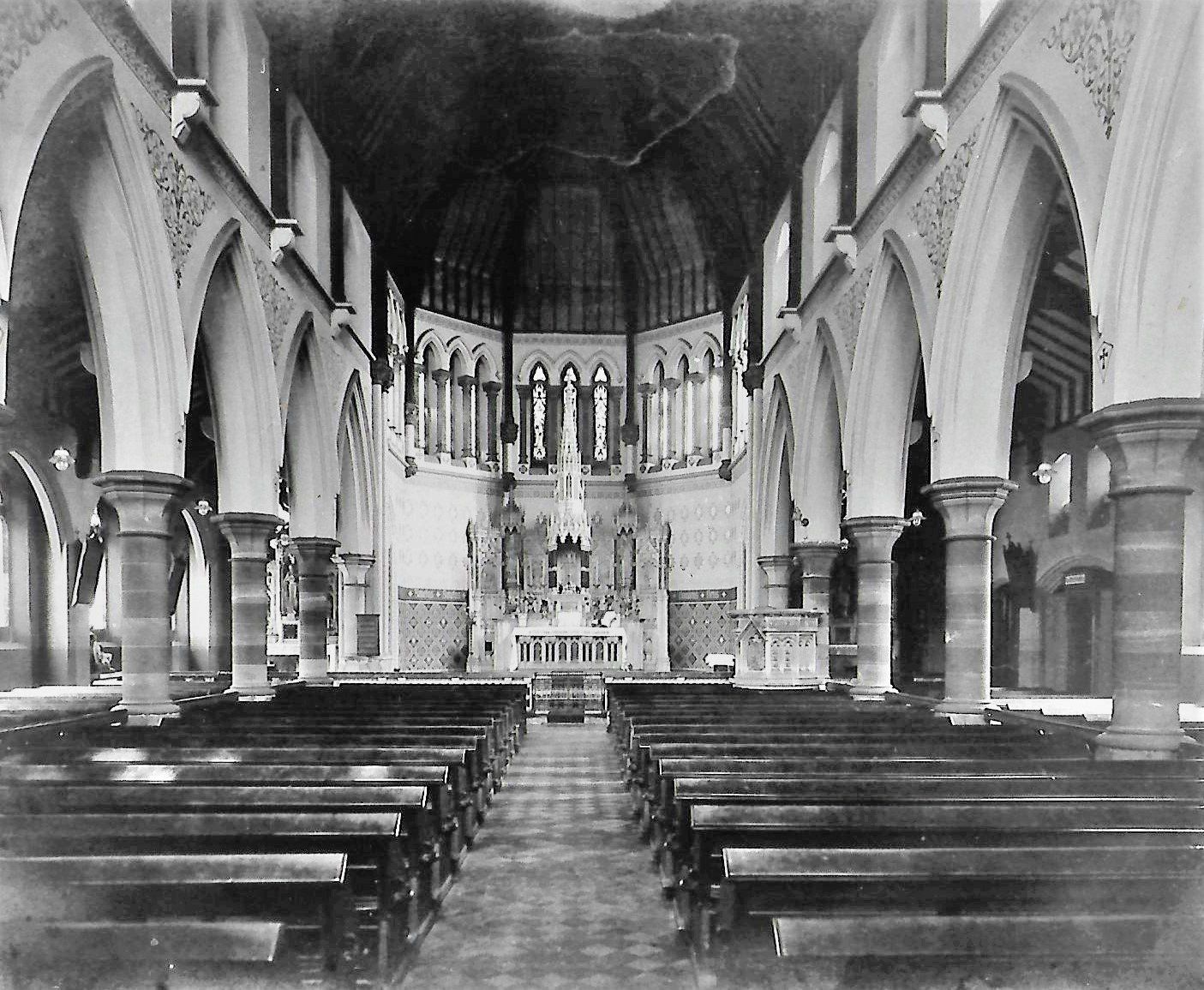St Patrick's Parish has its origins in the middle of the 19th century. Large number of Irish families who had fled from the famine at home and found work mainly in transport construction works in the West Midlands settled in this part of Wolverhampton.
We should be grateful to the Sisters of Mercy who came to Wolverhampton in 1848 (and served the Parish until 1984 – see Hope Community history) and, having taken over a school at SS Peter and Paul's, were keen to start another to reach out to the Wolverhampton Irish in the locality. To this end an area of land of 660 square yards was purchased for £198 and the school was formally opened by Dr Ullathorne, Bishop of the Central District in 1849. On the floor above the school rooms a chapel was dedicated to St George and St Patrick.
In the nineteenth century, in particular the forties and fifties, many Irish Catholics came to Wolverhampton especially from Galway, Roscommon and Mayo. The established SS Peter & Paul and the newly opened SS Mary & John could not accommodate the number of people desiring to celebrate Mass. The number of Catholics in Wolverhampton had risen from 600 in 1800 to 5,500 by 1881. The Bishop recognised the need for a new parish to meet the spiritual needs of the growing Catholic population, the majority being newly-arrived Irish. As there was already an Anglican Church of St George in Wolverhampton, the name St Patrick was chosen for the new parish, this was most appropriate given the large percentage of Irish desiring a new Church.
Thus it was that in 1865 the parish of St Patrick was founded with the purchase of some more land and the building of the Church. The foundation stone of St Patrick's Church was laid in 1866 by Father O'Sullivan at the corner of Littles Lane and Carberry Street (now Westbury Street). Have a glance at the aerial photograph of the Church on the front cover, taken in the 1960's.














